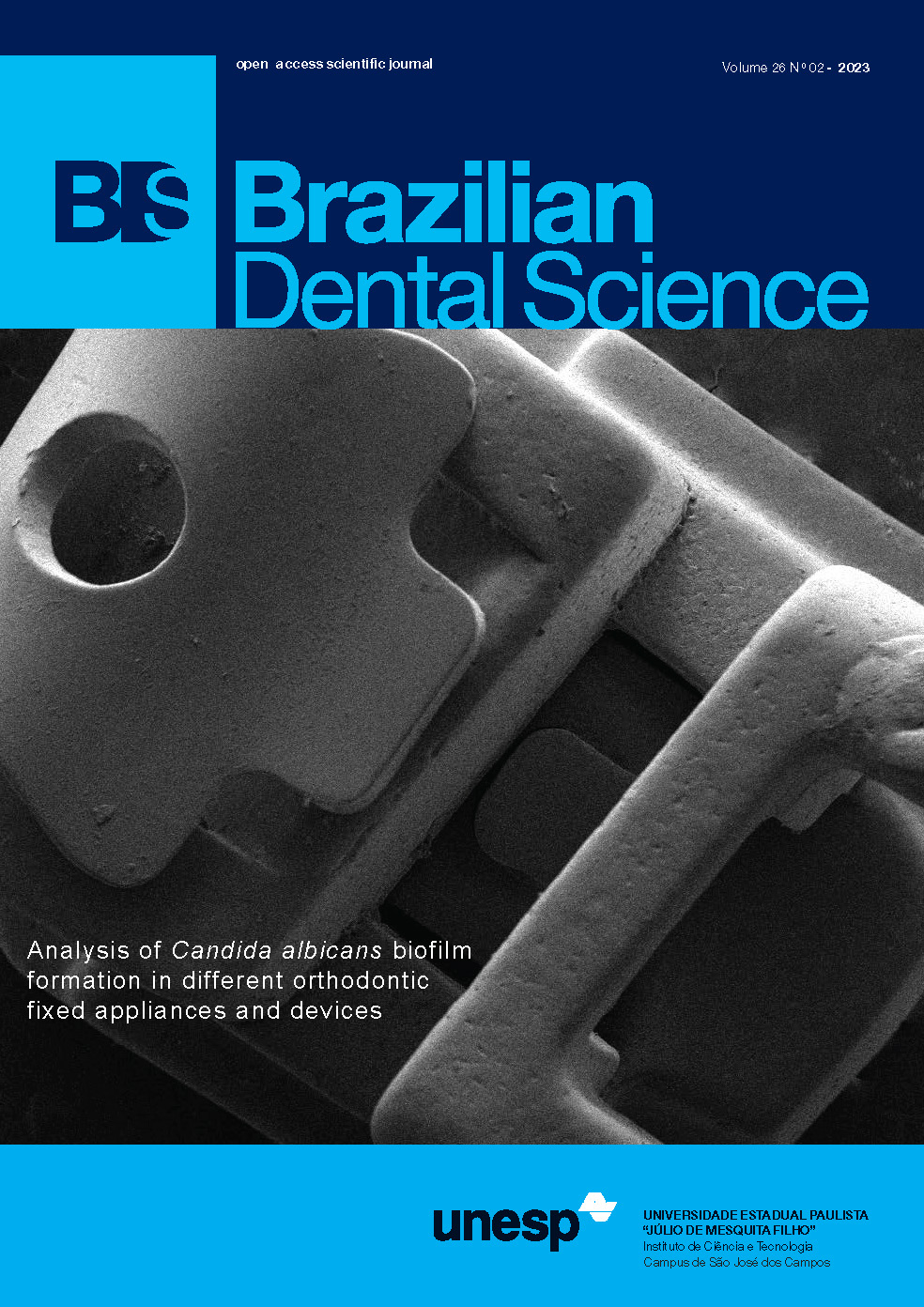Influence of traverse and waveone gold glider glide path files on the amount of apically extruded debris
DOI:
https://doi.org/10.4322/bds.2023.e3769Resumo
Objective: The aim of this study was to evaluate the effect of different glide path files on the amount of apically extruded debris. Material and Methods: Sixty single-canaled mandibular premolars were accessed and randomly divided into three groups (n= 20) according to the file used for glid path creation; group A using Traverse file, group B using WaveOne Gold Glider, group C using stainless steel K file. All teeth were then instrumented using the Reciproc system. The debris extruded apically during instrumentation were collected into pre-weighed Eppendorf tubes which were then stored in an incubator at 70 °C for 5 days. The weight of the dry extruded debris was established by subtracting the pre-instrumentation and post-instrumentation weights of the Eppendorf tubes. The data were analyzed using one-way ANOVA test, and post hoc analysis. Results: WaveOne Gold Glider produced the least amount of apical extruded debris (0.41±0.25) followed by the Traverse group (0.59±0.20) then the K-file group (0.64±0.16) with a statistically significant difference (p=0.003). Conclusion: Apical extrusion of debris is inevitable during root canal cleaning and shaping. Creation of glide path using engine-driven files produces less amount of apically extruded debris compared to hand-driven K-files.
KEYWORDS
Root canal preparation; Nickel titanium alloy; Dental instruments.
Downloads
Downloads
Publicado
Como Citar
Edição
Seção
Licença
TRANSFERÊNCIA DE DIREITOS AUTORAIS E DECLARAÇÃO DE RESPONSABILIDADE
Toda a propriedade de direitos autorais do artigo "____________________________________________________________________" é transferido do autor(es) para a CIÊNCIA ODONTOLÓGICA BRASILEIRA, no caso do trabalho ser publicado. O artigo não foi publicado em outro lugar e não foi submetido simultaneamente para publicação em outra revista.
Vimos por meio deste, atestar que trabalho é original e não apresenta dados manipulados, fraude ou plágio. Fizemos contribuição científica significativa para o estudo e estamos cientes dos dados apresentados e de acordo com a versão final do artigo. Assumimos total responsabilidade pelos aspectos éticos do estudo.
Este texto deve ser impresso e assinado por todos os autores. A versão digitalizada deverá ser apresentada como arquivo suplementar durante o processo de submissão.




























